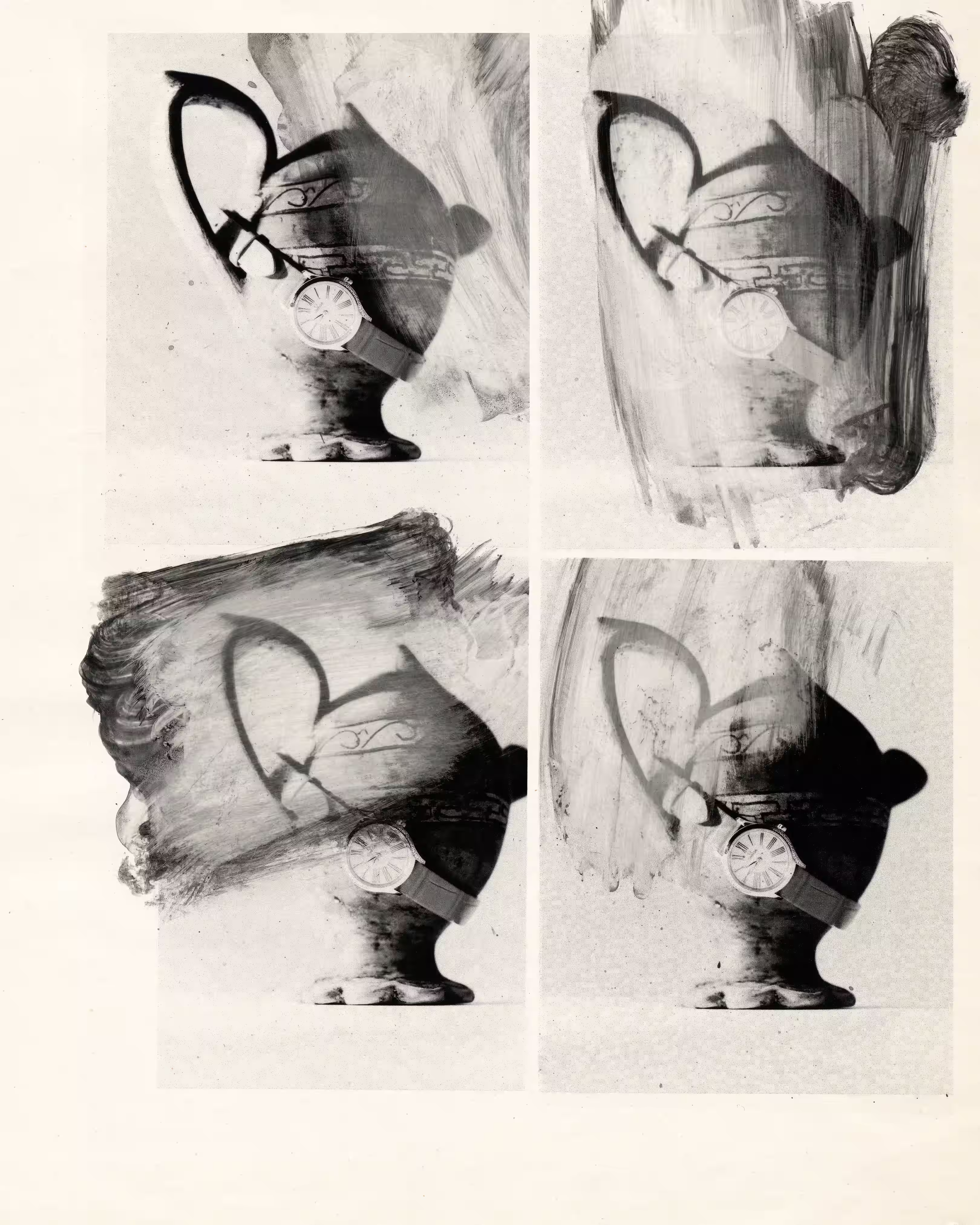
“I'm cooking sugar until I can't cook anymore,” says Andrea Chung who has been sculpting caramelized sucrose into a series of bottles for an installation in “Between Too Late and Too Early,” her forthcoming solo exhibition at Museum of Contemporary Art North Miami. Inside the confectionary vessels are fictional messages to the children of enslaved women who chose to end their pregnancies or commit infanticide rather than raise them into slavery. The notes are a mix of apologies and explanations. Over the course of Chung’s exhibition, the work will melt in slow motion, gradually deteriorating until it becomes unrecognizable.
For Chung, who is of Caribbean descent and a mother herself, personhood within colonialism has been a ripe theme for exploration. The material of sugar, while being a “mundane thing we take for granted,” she says, is also so widely available thanks to the violent history of its cultivation as a crop across the Americas. “I was thinking about human beings as objects of import and trying to find the origin of why these things happened,” says Chung about the good’s origins. That’s to say nothing of the insidious effects of its consumption; as Chung notes, diabetes is prevalent among her relatives. Though she first began working with the medium in grad school, not a single one of her sugar sculptures can be preserved—but that, too, is part of the point. “I like that it’s something that cannot be commodified,” Chung says. “It’s not for sale. It’s an experience.”

Motherhood also extends into another key component of the show, an untitled installation that comprises several sculptures Chung originally created for a 2023 show at the John Michael Kohler Arts Center in Wisconsin. As a starting point, she looked to the Detroit-based Afrofuturist group Drexciya, which conceived of an underwater world of the same name populated by the babies of enslaved women who were either thrown or jumped into the sea. “I’m interested in infanticide and what would cause a woman to make that decision,” she says. From this, Chung studied the history of midwives to slaves. In homage to them, she created a terrarium filled with plants they commonly used as well as a sculpture with outstretched hands in reference to “catching babies,” a Southern phrase for delivering newborns.
“Motherhood as a very particular idea and modern understanding is very much complicated through the lens of the transatlantic slave trade,” adds exhibition curator Adeze Wilford, emphasizing the political climate of the United States.


Another long-running motif in Chung’s practice is the lionfish, whose notoriety as an invasive species around Florida and the Caribbean resonated with the artist’s thinking about the trafficking of humans. The species is native to the Indian Ocean but at some point became popular in the aquarium trade and, presumably thanks to pet owners dumping them, made its way into the Atlantic Ocean by the 1980s. “Lionfish just seemed like an adequate metaphor for colonization coming into a space and destroying its ecosystem,” she says. “The only way that you can really deal with them is to kill them or eat them. I felt like the path of destruction was pretty fascinating.” Chung renders her lionfish on cyanotypes, nodding to the photographic documentation of slavery—much of which was staged post-emancipation—and the modern sense of people’s reliance on photographic evidence to internalize that something “really happened.”

Also drawing on photography—and its ability to reinforce the idea of the other to the Western gaze—is Chung’s 2009 video Come Back to Jamaica, the title of which was also a slogan for years in a campaign promoting tourism that cycled through stereotypes from an Uncle Remus-type figure to various beautiful woman, with latter fantasy, Chung believes, pandering to sex tourism. The film showcases the campaign imagery with the people cut out, leaving only blank silhouettes.
The scope and variety of the work in “Between Too Late and Too Early,” all comes down to Chung’s practice, being fundamentally based in research. “Every time I make a piece, I try to teach myself how to make something new, just so that I can have another tool in my toolbox and then try to find the right tool to conceptually get to what I want to say,” she reflects. “I always feel like I'm not making enough, but then when it's all in one space, I'm like, Wow, I really made all this.”
“Between Too Late and Too Early” is on view through April 6, 2025, at the Museum of Contemporary Art North Miami at 770 NE 125th St, North Miami, FL 33161.











.avif)








.avif)


_result_result.avif)



.avif)

_result_result.avif)

_result_result.avif)
.avif)

_result_result.avif)


_result_result.avif)


.avif)




.webp)

.avif)



















%20(1).avif)
.avif)




.avif)
















.avif)


.avif)





















.jpeg)

.avif)

_11%20x%2014%20inches%20(2).jpg)







.avif)

.jpg)

%20(1).jpg)
.avif)
.jpg)

.jpg)
.webp)


.webp)



.webp)


.webp)


.avif)









.avif)
.avif)

















.avif)









.avif)



.avif)




















-min_result.avif)









.avif)







3_result.avif)
_result.avif)






_result.avif)




.avif)




.avif)













.avif)

.avif)











.avif)

.avif)










.avif)



.avif)


_result_result.avif)
















-min_result.avif)






.avif)
.jpg)
















_result.avif)

.avif)


.avif)







.avif)





.avif)

_result.avif)



.avif)















.avif)









.avif)


.avif)














.avif)




.avif)








.avif)

.avif)

.avif)



.avif)


.avif)




.avif)

.avif)

.avif)
.avif)
%20(1).avif)
.jpg)

%20(1).avif)








.avif)
.avif)

.avif)






.avif)



















.avif)
.avif)
